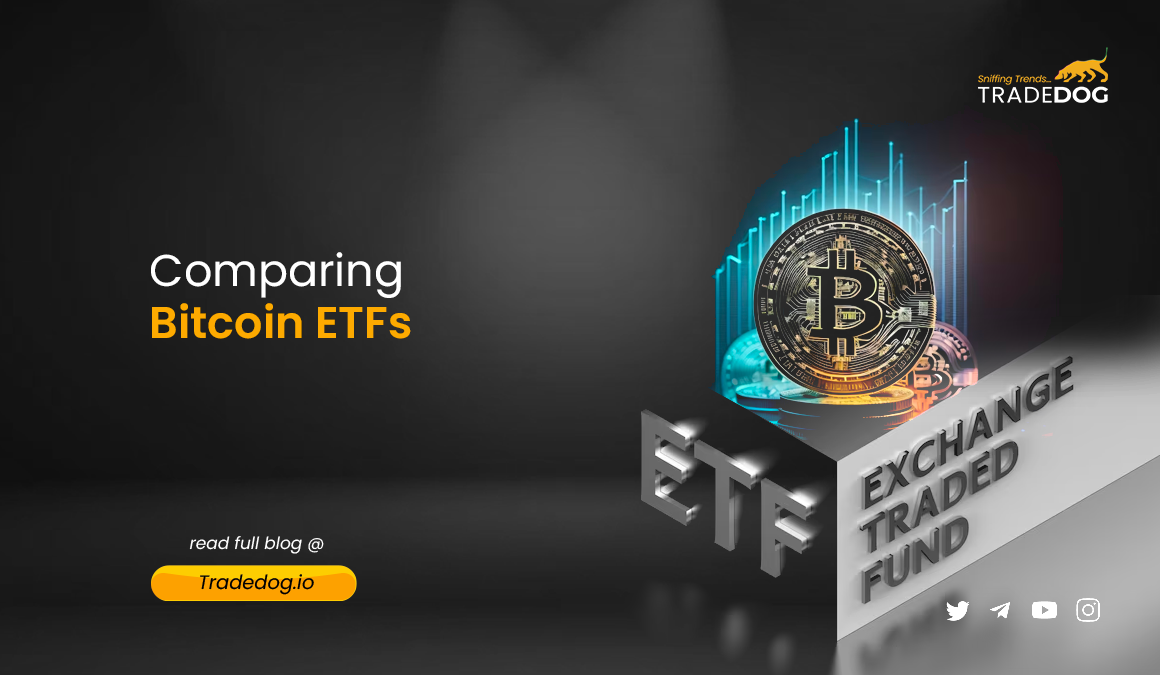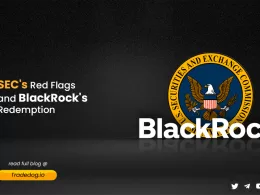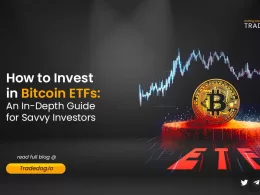Quick Links
- Comparison
- Overall Performance
- Investment Type
- Liquidity and Assets
- Key Considerations
- Pros and Cons of Bitcoin ETFs
- Grayscale Bitcoin Trust (GBTC)
- iShares Bitcoin Trust (IBIT):
- Fidelity Bitcoin Trust ETF (FBTC):
- ARK 21Shares Bitcoin ETF (ARKB)
- Bitwise Bitcoin ETF (BITB):
- Invesco Galaxy Bitcoin ETF (BTCO):
- VanEck Bitcoin Trust (HODL):
Bitcoin ETFs are becoming more and more important in today’s financial market. As the popularity of Bitcoin and other cryptocurrencies continues to grow, so does interest in Bitcoin ETFs. These ETFs provide a more traditional way for investors to get involved in the digital asset market. They offer a way to potentially profit from Bitcoin’s price movements without the challenges of buying and storing Bitcoin directly. This makes Bitcoin ETFs a significant development in the world of finance.
To give you an idea of the scale of the Bitcoin ETF market, let’s look at some overall stats:
- The total volume of all Bitcoin ETFs is currently around $9.87 billion.
- The total market cap of all Bitcoin ETFs is approximately $47.53 billion.
- The total Assets Under Management (AUM) across all Bitcoin ETFs is about $42.24 billion.
Overview of the Bitcoin ETFs
- Grayscale Bitcoin Trust (GBTC): GBTC is the biggest Bitcoin ETF. It lets investors make money from Bitcoin’s price changes without having to own or store Bitcoin themselves.
- iShares Bitcoin Trust (IBIT): Managed by BlackRock, IBIT tracks the price of Bitcoin. It offers shares that represent a part of the total Bitcoin it holds.
- Fidelity Wise Origin Bitcoin Fund (FBTC): FBTC gives exposure to the value of Bitcoin. It’s a passive investment vehicle that tracks the price of Bitcoin.
- ARK 21Shares Bitcoin ETF (ARKB): ARKB tracks the performance of Bitcoin. It’s a passive investment vehicle that tracks the price of Bitcoin.
- Bitwise Bitcoin ETF (BITB): BITB gives exposure to the value of Bitcoin held by the trust. It’s a passive investment vehicle that tracks the price of Bitcoin.
- Invesco Galaxy Bitcoin ETF (BTCO): BTCO helps investors get secure and convenient exposure to Bitcoin. It offers cost-effective exposure to Bitcoin within a conventional and regulated framework.
- VanEck Bitcoin Trust (HODL): HODL tracks the performance of the price of Bitcoin. It’s a passive investment vehicle that tracks the price of Bitcoin.
Comparison
| ETF | AUM | Reserves(In BTC) | Volume Traded | Market Cap |
| Grayscale Bitcoin Trust (GBTC) | $26.60B | 4,29,113 | $529.67M | $22.19B |
| iShares Bitcoin Trust (IBIT) | $10.01B | 1,60,641 | $562.16M | $3.66B |
| Fidelity Wise Origin Bitcoin Fund (FBTC) | $6.47B | 1,04,129 | $410.31M | $3.03B |
| ARK 21Shares Bitcoin ETF (ARKB) | $2.11B | 33,924 | $114.90M | $1.02B |
| Bitwise Bitcoin ETF (BITB) | $1.53B | 24,633 | $53.17M | $857.13M |
| Invesco Galaxy Bitcoin ETF (BTCO) | $386.60M | 6,240 | $39.30M | $360.73M |
| VanEck Bitcoin Trust (HODL) | $270.40M | 4,299 | $10.63M | $158.92M |
Overall Performance
- All ETFs listed experienced a similar price increase of around 4.4% in the last period.
- GBTC has the highest current prices but also the highest expense ratio of 1.50%.
- BITB, despite being an actively managed ETF, has a lower expense ratio (0.20%) compared to most of the physically backed ETFs.
Investment Type
- All listed ETFs, except ARKB, directly invest in Bitcoin, offering exposure to the underlying asset.
- ARKB invests in companies involved in blockchain and innovation, providing indirect Bitcoin exposure.
Liquidity and Assets
- GBTC leads in terms of AUM ($26.65 billion), followed by IBIT ($6.65 billion) and FBTC ($4.73 billion).
- GBTC also has the highest trading volume ($1.87 billion) compared to other physically backed ETFs.
- ARKB has a significantly smaller AUM and trading volume compared to physically backed ETFs.
Key Considerations
- Investment fees: Expense ratios vary significantly, with GBTC and HODL having the highest and ARKB having the lowest.
- Investment type: Choose between direct Bitcoin exposure (physically backed ETFs) or indirect exposure through companies related to blockchain and innovation (ARKB).
- Liquidity and AUM: Consider the size and trading volume of the ETF for your investment needs
Pros and Cons of Bitcoin ETFs
Grayscale Bitcoin Trust (GBTC)
Pros:
- Largest AUM, providing stability and liquidity.
- Established track record, launched in 2013.
- Traded over-the-counter (OTC), offering 24/7 access.
Cons:
- High expense ratio (1.50%).
- Trades at a premium to NAV (net asset value), potentially overvalued.
iShares Bitcoin Trust (IBIT):
Pros:
- Lower expense ratio (0.25%) compared to GBTC.
- Physically backed ETF, holding actual Bitcoin.
- Regulated and traded on exchanges, offering transparency and ease of access.
Cons:
- Smaller AUM compared to GBTC.
- Relatively new, launched in October 2021.
- May face regulatory scrutiny or restrictions in certain jurisdictions.
Fidelity Bitcoin Trust ETF (FBTC):
Pros:
- Lower expense ratio (0.25%) compared to GBTC.
- Physically backed ETF, holding actual Bitcoin.
- Offered by a reputable institution like Fidelity.
Cons:
- Smaller AUM compared to GBTC and IBIT.
- Launched in October 2021, similar to IBIT in terms of experience.
- Limited geographic availability currently.
ARK 21Shares Bitcoin ETF (ARKB)
Pros:
- Diversified exposure to blockchain and innovation, not just direct Bitcoin.
- Lower expense ratio (0.21%) compared to most physically backed ETFs.
- Actively managed by ARK Invest, potentially offering higher returns.
Cons:
- Indirect exposure to Bitcoin, with performance depending on chosen companies.
- Smaller AUM and trading volume compared to physically backed ETFs.
- Higher risk due to active management and focus on emerging technologies.
Bitwise Bitcoin ETF (BITB):
Pros:
- Lower expense ratio (0.20%) compared to most physically backed ETFs.
- Physically backed ETF, holding actual Bitcoin.
- Focuses on security and transparency in its operations.
Cons:
- Smaller AUM and trading volume compared to larger competitors.
- Launched in October 2021, similar to IBIT and FBTC in terms of experience.
- Limited geographic availability currently.
Invesco Galaxy Bitcoin ETF (BTCO):
Pros:
- Lower expense ratio (0.39%) compared to GBTC.
- Physically backed ETF, holding actual Bitcoin.
- Offered by a well-established investment firm like Invesco.
Cons:
- Smaller AUM and trading volume compared to larger competitors.
- Launched in October 2021, similar to IBIT, FBTC, and BITB in terms of experience.
- Limited geographic availability currently.
VanEck Bitcoin Trust (HODL):
Pros:
- Physically backed ETF, holding actual Bitcoin.
- Lower expense ratio (0.25%) compared to GBTC.
Cons:
- High premium to NAV, potentially overvalued.
- Smaller AUM and trading volume compared to larger competitors.
- Launched in October 2021, similar to IBIT, FBTC, and BITB in terms of experience.
Conclusion
Each Bitcoin ETF we’ve discussed offers unique advantages and caters to different types of investors. While GBTC stands out for its size and liquidity, other ETFs like IBIT, FBTC, ARKB, BITB, BTCO, and HODL offer competitive features that make them worthy of consideration.
Choosing the right Bitcoin ETF depends on various factors, including your investment goals, risk tolerance, and the specific features you value in an ETF. It’s crucial to do your research and possibly seek advice from a financial advisor before making an investment decision.
Looking ahead, the landscape of Bitcoin ETFs is likely to evolve. As the cryptocurrency market matures and regulatory frameworks continue to develop, we can expect to see new products and innovations in this space. This could include ETFs that track other cryptocurrencies or ETFs that combine exposure to Bitcoin with other asset classes.
Remember, while the potential for high returns can be attractive, investing in Bitcoin ETFs also comes with significant risks. Cryptocurrency prices are highly volatile, and investors should be prepared for the possibility of losing their entire investment.









